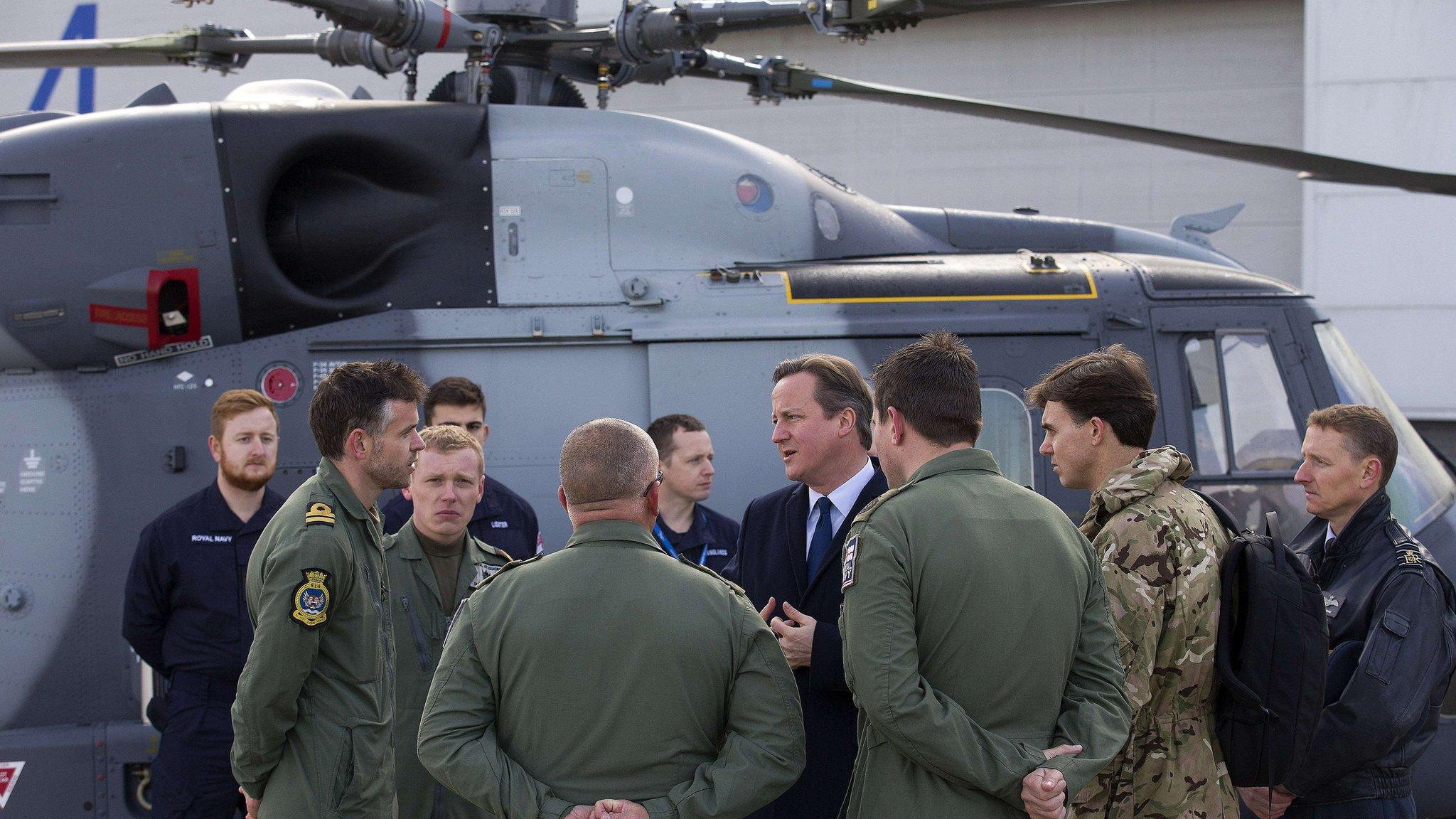Defence Review: Fighting old battles?
- Published

Generals, so the old saying goes, are always preparing to fight the last war.
This Strategic Defence and Security Review, external, the UK government's attempt to shape the armed forces for the coming five years, to be fair to its authors, doesn't do that.
Rather, it imagines the last war Whitehall would like to have fought, had it been able to.
How so? Well, rather than shape the military to fight the sort of campaign it waged in Helmand, Afghanistan, during 2006-12, Monday's paper imagines the type of action that might have happened if Parliament had voted in 2013 to bomb President Bashar al-Assad's forces in Syria, or other similar, limited, actions fought at arm's length.
So the big winners from Monday's review, or SDSR, are air-power and special forces.
The government's plans to increase military spending, keeping it equivalent to 2% of gross domestic product, will also give an additional £12bn shot-in-the-arm to industry (over the next 10 years) since the increase will go largely on new weapons, rather than additional people.
The Royal Air Force, cut back to just seven fast jet squadrons by the 2010 SDSR, will grow back to nine (with two squadrons of Typhoon fighters remaining in service for longer) and get more modern aircraft, and one squadron of American-made Poseidon maritime patrol aircraft.
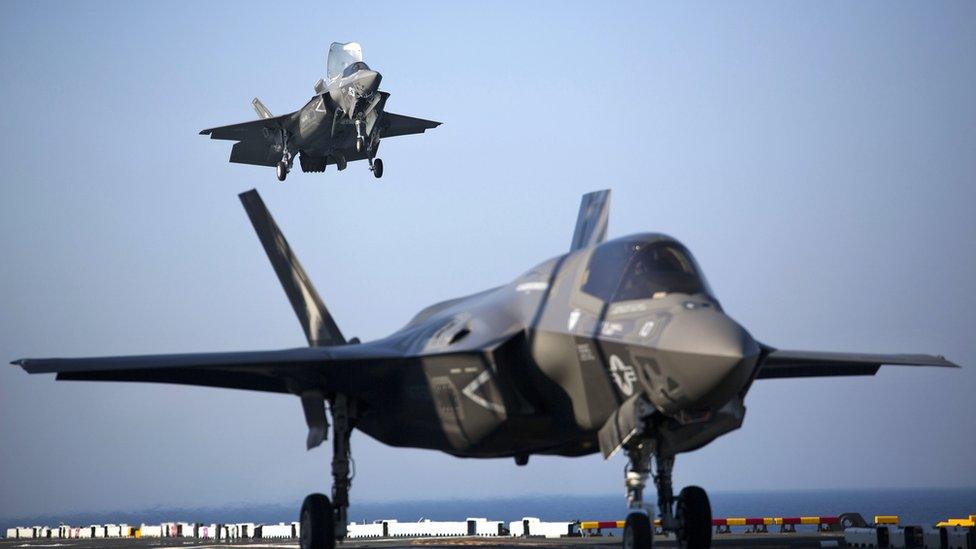
The government has committed to purchasing 48 F-35B Lightning II Joint Strike Fighters
There will be 20 new drones (to replace the current 10) as well, and the commitment to order 48 F35B fighters by 2023 will finally allow for the replacement of the Tornado with something much more modern.
What the latest SDSR does not do, or rather what it hardly does, is increase the armed forces' capability for sustained or high-intensity operations or, in layman's terms, their ability to fight a war against another country.
Limited capability
So, the two new aircraft carriers are to come into service with very limited defence against the type of advanced missile or air-attack that countries such as Russia or China could throw at them.
Despite the commitment to a new class of general purpose frigate (the Type 26), confirmed today, the Royal Navy would also struggle to assemble enough escorts for its new carriers to protect them from submarine attack.
The new carriers, rather, can now be seen clearly as floating runways to strike non-state enemies or mid-sized military powers (such as Libya in 2011 or Syria, nearly, in 2013), or for other uses such as flying helicopters to evacuate British nationals or to deliver disaster relief.
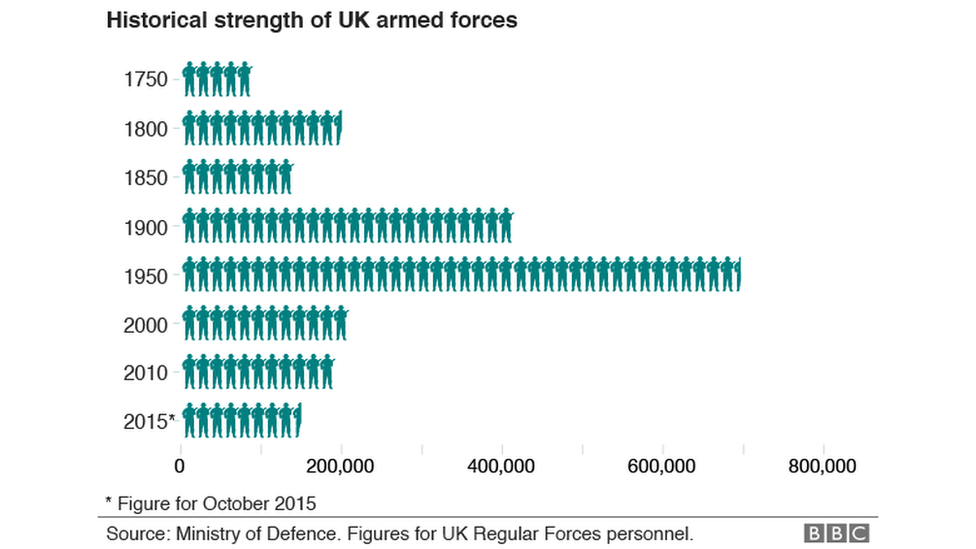
They will have to operate relatively close to shore, because of the limited range of the F35 and helicopters that will be embarked, and doing that against a major military power would be too risky with the level of protection the Royal Navy could give them: no admiral will want to risk the loss of a ship named HMS Queen Elizabeth.
Many would argue that this approach makes sense, that going to war against Russia is unimaginable, even in a limited way: for example if the Kremlin was using force against the UK's Nato allies, the Baltic republics.
Certainly, regenerating the full panoply of forces lost in post-Cold War cuts would require enormous additional spending.
Kit, not personnel
This review does, however, cover the possibility of a serious confrontation with Europe's eastern neighbour.
Russia has been raised to a "Tier 1" potential threat by the UK, and the planning to mitigate it includes, after all, the replacement of Britain's Trident nuclear weapon system.
The Army (in a pre-announced move) will get a new generation of armoured vehicles for its two high-readiness brigades, which will modernise them, by 2025, in case they had to be deployed in support of a Nato ally.
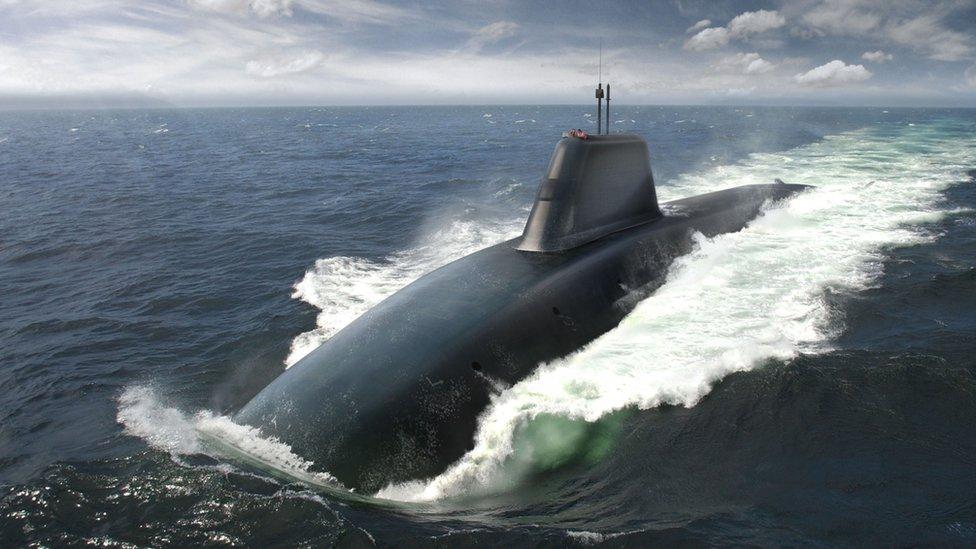
The Defence Review commits to replacing the UK's submarine-based nuclear deterrent with the so-called Successor fleet (artist's impression)
Much of the new kit for the RAF and Royal Navy also would be very useful in any confrontation on Nato's borders if - and the caveat is important - it is properly supported by sufficient well-trained people, and backed up with ample stocks of advanced ammunition.
People, though, don't get much of a break in this plan - the RAF will grow by 300 and the Royal Navy by 400 - and this when the fleet had asked for 2,000, is about to take delivery of its first new carrier, and is already having difficulties manning its ships.
Civilian job losses
Cuts to allowances also announced on Monday will hardly help, when it comes to retaining skilled service men and women.
The armed forces, then, will grow just a little as a result of Monday, and even the modernisation of RAF squadrons will only allow it to add a few jets to the current eight Tornados bombing the Islamic State group, when it comes to a sustained deployment.
The special forces, also, will get new equipment but will not expand in strength significantly.
And the MoD's civilian workforce faces deep cuts - with unions describing as "devastating" suggestions that up to 18,000 jobs might go. That's a drop in head-count of nearly 30%, to 41,000, between now and 2020, with some of the department's services being outsourced to private firms.

The UK regards instability overseas, especially in places like Ukraine, as a Tier 1 potential threat
What it all adds up to is a defence posture designed for sudden emergencies rather than enduring commitments of the kind seen in southern Iraq and Afghanistan or all-out state-to-state warfare that Britain prepared for during the Cold War.
It will take 10 years for this SDSR to mature, in terms of the delivery of large numbers of new planes, armour, and ships.
Two other old military sayings come to mind here - that no plan survives contact with the enemy and that the enemy always gets a vote.
In other words, the world and the UK's real or potential enemies will hardly stand still during that coming decade.
As the ink dries on SDSR 2015, there will be people in Whitehall who are already thinking about the next one, in 2020.
Mark Urban is diplomatic and defence editor for BBC Newsnight. You can read more from him on his blog and follow him on Twitter here , external
- Published23 November 2015
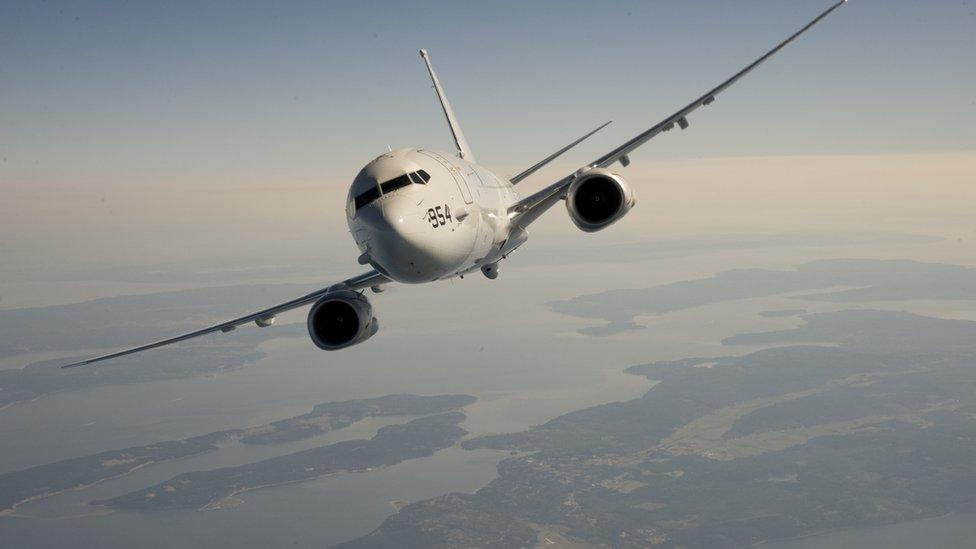
- Published23 November 2015
